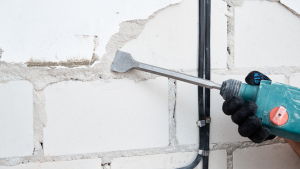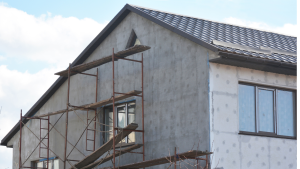One of the most frequent problems that homeowners face is stucco repair. It’s a challenging and time-consuming procedure.
In the following article, I go through the principles of stucco repair.
Step 1:Determine whether your stucco has to be repaired.
A small coating of sand is applied first, followed by two applications of cement. This substance is blended with water to make a paste. When it dries, it takes on the form of the mold into which it is inserted.
You must remove the old stucco and apply a new layer if it begins to flake off.
You may repair peeling stucco without removing the current stucco if it is only present in select areas.
A professional opinion is often advised if you need clarification if you need to repair your stucco.
Step 2: The old stucco must be removed
The old stucco must often be removed before laying a fresh coat when repairing stucco.
Since it entails removing the old stucco and adding a new layer, this is the trickiest element of the method. This entails taking safety measures and using a variety of cutting instruments.
Step 3: apply new stucco.
After removing the old stucco, it’s time to apply a new layer.
Typically, stucco is applied using a trowel. Trowels are better tools for dealing with stucco, which is a tough material.
A brush with stiff bristles is beneficial in a variety of settings.
If you have a trowel, apply the stucco in the same pattern as the previous coat. However, a trowel should never be used on a wet surface.
Step 4: The door’s surrounding stucco has to be fixed.
Making ensuring that the repair process doesn’t damage the door is crucial.
Do this by applying new stucco around the door and walls but not everywhere.
Once the new plaster has dried, you can fix the small area by the door.
Step 5:Please apply more caulk.
After the area has been cleaned of dust and dirt, the sealer may be reapplied.
In many cases, After a few weeks or months, a second layer of sealer is necessary.
Step 6: Paint the walls again.
When painting a room, it’s important to make sure the paint doesn’t flake off.
So that the paint doesn’t come off, The walls should be given a light layer of paint sealer.
You might even embellish the wall with a very little amount of paint. However, this can only be done once the wall has dried completely.
Step 7: Caulk should be reapplied.
If the roof leaks, make sure the roof is not damaged.
To prevent water from seeping into the walls and ceilings, you might seal the roof.
A caulking gun may make it easier and faster to seal gaps. It’s available in a rainbow of hues.
Step 8: Clean up
You may tidy up after applying the caulking.
Use a good-sized brush to get rid of all the dust and dirt.
The residual dust may then be removed with a damp towel.
To remove loose dust and debris, you may also use a vacuum.




